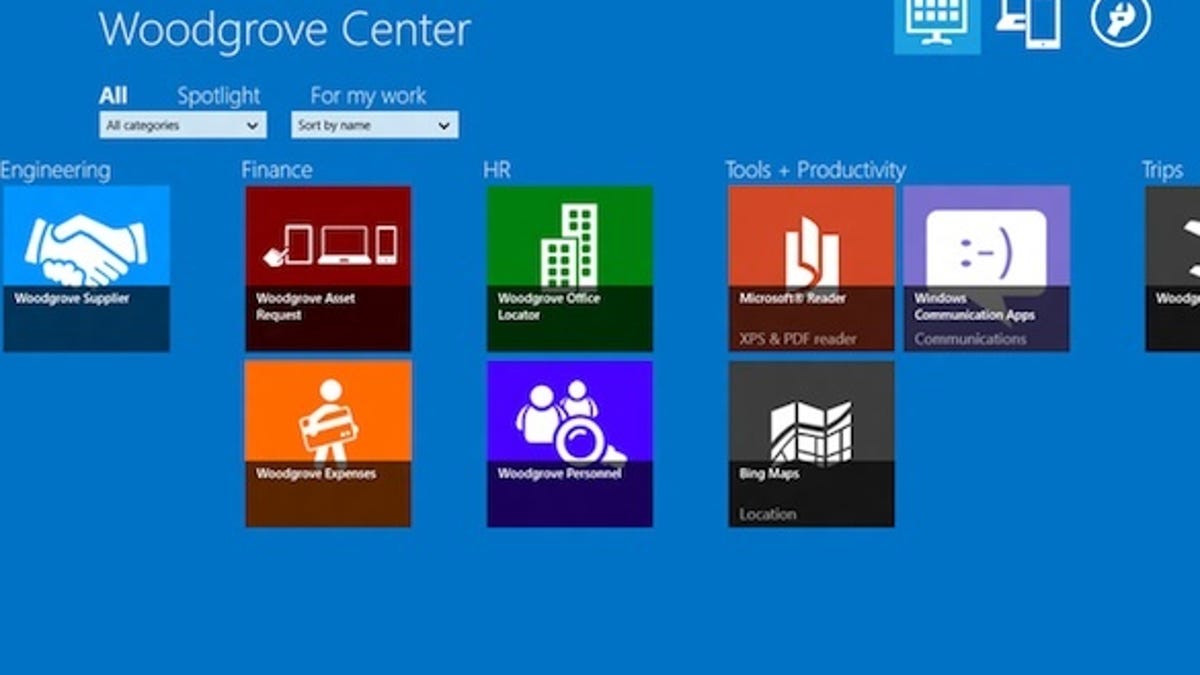Go ahead, bring your Windows 8 gadgets to work, says Microsoft
Employees are bringing their personal laptops, tablets, and smartphones to work rather than using the devices assigned to them by the organization they work for. No problem, the company says.

Windows 8 running on small devices using chips from Qualcomm, Nvidia, and others is not just a consumer play, as Microsoft made clear in a post this week.
In a blog posted Thursday, "Managing 'BYO' PCs in the enterprise (including WOA)", Mircrosoft's Jeffrey Sutherland, a program manager lead in the company's Management Systems group, addresses the "drive towards consumerization of IT" and how consumer technology is "bleeding into business organizations." In short, employees are bringing their personal laptops, tablets, and smartphones to work rather than using the devices assigned to them by the organization they work for.
WOA refers to Windows-[8]-on-ARM, or what is now called Windows RT. Devices running Windows RT will include tablets, hybrid tablet-laptops, as well as small laptops -- all running on power-efficient ARM chips from Qualcomm, Nvidia, or Texas Instruments.
Windows RT will not be able to run older so-called "legacy" apps that run on Windows 7 PCs based on Intel/AMD x86 processors, as Microsoft's Steven Sinofsky said previously (when it was only referred to as WOA; Microsoft now seems to refer to it as both Windows RT and WOA, at least internally). And there has been some speculation that Microsoft has not been able to include all of the corporate "enterprise" features it originally intended for Windows RT.
In Sutherland's Thursday blog, he explains that the need to access business apps, like home-grown apps developed by IT departments, "is one of the most important use cases for consumer devices in the enterprise."
Sutherland continues. "Many organizations want to directly control and manage access to their internal LOB (line-of-business) apps, including the distribution of the app binaries for installation. For these organizations, publishing their LOB apps to the public Windows Store doesn't make sense, since there is no reason to broadcast these applications to others."
Those apps also need high levels of security and data protection that IT departments need to control, according to Sinofsky.
Some key points:
- For WOA, a new management client: A new client that can communicate with a management infrastructure in the cloud to deliver business apps to users.
- Two parts to client: The built-in system component, called the agent; and a Metro-style app, dubbed the self-service portal, or SSP "that the consumer uses to browse for and install LOB apps made available to them."
- Connecting to management infrastructure: Using a new Control Panel applet on the WOA device, the user supplies their company email address and password, "just like they do to set up an Exchange email account. The agent then performs a service lookup to locate the organization's management infrastructure based on the user's email address."
- Intel-AMD x86 devices have been doing this for a long time: Enterprise tools and methods on x86 have been around forever and include management products like System Center Configuration Manager and Windows Intune. "Management of Metro style [business] apps on x86/64 will be able to leverage those same existing tools and methods and only requires that the client be configured to trust the apps that come from a source other than the Windows Store."
- More here.

